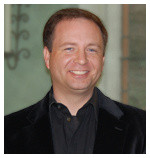Friday, February 19, 2010
The Theory and Theology of Discipleship

Robert Pazmino proposes an acronym that encapsulates the three phases of teaching as “PIE.” The letters in the order given stand for “preparation,” “instruction” and “evaluation.” While many things are as “easy as pie,” teaching oftentimes is not one of these endeavors. Perhaps the best place to start on this meaningful yet sometimes treacherous journey of teaching is to define what is meant by Christian education. Powers defines Christian education as seeking “to develop within persons an understanding of, commitment to, and ability to practice Christian teachings . . . the ongoing effort of believers seeking to understand, practice, and propagate God’s revelation.” Perhaps a working definition of Christian education could be seeking to partner with the Holy Spirit in teaching and learning that transforms lives into the image and pattern of Jesus Christ.
Pazmino says, “A holistic vision of education calls for addressing the information, formation, and transformation of persons.”
The holistic vision can be illustrated by a person needing a balanced diet. This balanced diet contributes to the overall health of a person. In theory if a person eats the right kinds of food (grains, vegetables, fruits, milk products, and proteins) from each food group, he or she will live healthier and live longer. Daryl Dale takes spiritual formation and the balanced diet principle and applies it to the development of a spiritually healthy child. His “spiritual formation philosophy” emphasizes the spiritual needs of children rather than programming. Program based ministries evaluate themselves on the basis of size, growth, and enthusiasm. Growth in a ministry and enthusiasm on the part of workers and children are certainly important elements of quality ministry. However, when a church fails to evaluate what is happening inside the life of a child, it is in danger of engaging its staff in labor intensive ministries that have little spiritual impact on people.
Dale identifies twelve components of a spiritually balanced diet. These spiritual needs are: “salvation, Bible knowledge, praise and worship, Christian friendships, personal outreach, Christian service, church commitment, prayer, devotional life, missions awareness, Scripture memorization, and stewardship.” Dale shows that these particular topics can be tested to determine their inclusion by asking the following two questions: 1) “Would we be negligent if we did not teach one thing on prayer (substitute any other issue) over the next twelve months?” The second question would be, 2) “Would we be doing our God-given ministry well if we did not offer one prayer experience (substitute and other issue) or project over the next twelve months?” When leaders are knowledgeable of the main or basic spiritual needs, they can begin to address these needs through their programs.
Dale also points out that all of the components of a spiritually balanced diet do not merit equal attention. He says, “Just as the ‘Food Pyramid’ (nutrition chart) illustrates how a person needs more daily servings from the grain group than from the protein group, some spiritual issues need to be addressed more often than others. Some may be addressed every week while others may be satisfied through three or four lessons and a couple of experiences a year.”
Daniel Aleshire says that an educational ministry within the church should lead to discipleship and this ministry has several requirements. He says, “First, education that is true to the grace of the gospel requires a vision of the church, its purpose, and mission. Christian education must emerge from the mission of the church and move its people toward authentic discipleship.” The church must keep in mind that it is mobilizing an army to win the world for Christ, not simply edifying oneself. Discipleship is not for the purpose of growing believers to sit in a pew, but to equip believers to be sent out to see their neighbor won for Christ. Aleshire says, “Second, Christian education requires theologically informed goals and objectives.”
This is a reference to what the teacher is trying to accomplish, and how these goals are to be accomplished. Not only is the content of the lesson important but the method of delivery as well. Aleshire also says, “Third, the learning that results from Christian education requires some serious consideration. The learning must be of a special kind—the kind that provides knowledge, instills feelings, and leads to right living. Forth, the processes and organizations that the church uses to educate people in faith require ongoing, thoughtful evaluation and renewal.” These refer to life change as the ultimate objective and ways to evaluate if this change is taking place.
Before any life changing learning can ever take place there must be a desire in the heart of a person to share their lives and communicate truth. This is a prerequisite for transformational teaching. For Christian educators, there must be a heart change in the teacher before there can ever be a life change in the student. In the secular teaching environment, there is no spiritual component per se to teaching mathematics or language arts, for example. The effective Christian teacher has to have an active prayer and Bible study lifestyle. The Christian educator has to understand the importance of the Holy Spirit working through the teacher throughout the course of the teaching endeavor. It is a love of God and His Word and an understanding of the passion that was poured out for them on a rugged cross that overflows into life changing teaching. The teacher must love the Lord and this love is displayed in his teaching. This is something that cannot be taught. It is not a different method to try, a resource to implement, or something that could be substituted. The teacher either has this passion or he does not. Pazmino says, “Every teaching session, along with its explicit and implicit curriculum, has a null curriculum. Basically the null curriculum is that which is not taught, with the explicit curriculum referring to what is taught. The implicit curriculum refers to what is caught by persons than directly taught in the course of instruction.” The teacher’s life is the real curriculum that will lead to transformation in the students. More than likely they will remember the character of their teacher lived out before them far longer than they will remember the lesson taught in the classroom.
Perhaps, the first step to becoming an effective teacher is to set the bar higher and higher throughout one’s ministry. This desire to improve comes from a humble heart and an authentic desire to reach more people for Christ. Hendricks suggests that “to teach children two plus two equals four, you need a minimum of four years of higher education. To teach the unsearchable riches of Jesus Christ, anything is good enough . . . and that’s why it too often degenerates into a ministry of mediocrity.” The teaching of the Bible is the most important thing a person could ever do. Therefore, there should be a much higher standard than to simply seek to fill a slot on a nomination committee list. Howard Hendricks tells of a story that expresses this point. He says,
" We learned she was eighty-three and from a town in Michigan’s Upper Peninsula. In a church with a Sunday school of only sixty-five people, she taught a class of thirteen junior-high boys. She traveled by Greyhound bus all the way to Chicago the night before the convention. Why? In her words, ‘To learn something that would make me a better teacher.’ I thought at the time, ‘Most people who had a class of thirteen junior-high boys in a Sunday school of only sixty-five would be breaking their arms to pat themselves on the back: Who, me? Go to a Sunday school convention? I could teach it myself!’ But not this woman. Eighty-four who sat under her teaching are now young men in full-time vocational ministry. Twenty-two are graduates of the seminary where I teach."
Was there something special about this woman? What made her teaching so effective? She had a desire to raise the bar of her teaching ministry. This passion for Christ and having a lifestyle of constant learning overflows into the lives of the students. They see before them week after week a person who lives what they teach. Jesus said, “Take up my yoke upon you and learn from me, for I am gentle and humble in heart, and you will find rest for your souls” (Matt 11:29, NIV). Eldridge said, “The yoke was a symbol of submission, obedience, and service. It was a means to harness power and direct the energy of an animal. The yoke guides or steers the beast of burden.” The student like the animal must be willing to submit to the teaching or guiding of another. The disciple must be “teachable.” While the early disciples were from different backgrounds and had rather undesirable qualities, they were teachable and truly wanted to understand what Jesus was teaching. This teachable countenance was used by God to spread the gospel around the world, and it is only when modern day teacher/disciples have this teachable characteristic that the gospel can continue to transform the world. When students see that their teacher is learning, they will desire to follow his example.
Gregory Milton says that a teacher must “stimulate in the pupil the love of learning, and to form in him habits and ideals of independent study.” This stimulation from within comes from observing the teacher and then applying these learned behaviors to their own lives. This is why Scripture holds those who teach to a higher standard (Jas 3:1). God recognizes that those who desire to teach set the standard for which their students follow. It is therefore the second goal of the teacher to encourage their students to fall in love with learning about God and to encourage them to continue this practice throughout his life.
If this lifelong learning is to be embraced by the student, the teacher must understand seven distinct elements. Gregory refers to these concepts of education as the “Seven Laws of Teaching.” From these seven laws are three major components of effective learning (preparation, instruction, and evaluation.) There are two personal factors that make up the first element, (1) a teacher and (2) a learner. The second element has two factors as well, (3) a common language and a (4) lesson of truth to be communicated. The third element has three functional acts or processes, (5) that of the teacher – the teacher’s work, (6) that of the learner – the learner’s work, and a final finishing process (7) to test and fix the result.
Subscribe to:
Post Comments (Atom)
Gospel Magic

how did he do that?
About Me

- Drew Boswell
- I am the father of four wonderful children and the husband of the best woman on the planet. I am pastor at Daybreak Community Church, check us out at www.daybreak-church.com. I also have a web site at www.drewboswell.com.




0 comments: